World War I might seem like ancient history, but it was actually pretty recent. While the technology used in the war might seem primitive to us now, it was cutting-edge at the time and represented the world’s greatest efforts in creating weapons of war to defend their countries. Firearms had been a staple of war for centuries at that point. However, their use had been rather limited due to the necessary process of muzzle-loader reloading and the limitations of blackpowder.
However, when World War I rolled around, machine guns had been in development for around thirty years, and advancements in automatic and semi-automatic guns made them accessible and usable by militaries around the world. Several other new weapon designs were introduced during World War I, including the British Stoke mortar, German Flammenwerfer, tanks, and other designs in artillery, which killed more people in the Great War than any other weapon type.
Determining which weapons belonged on this list was generally easy. Ranked has a list of WWI-era weaponry ranked by how many users rated it as the most iconic weapon of WWI, giving us a good idea of which weapons of WWI achieved worldwide notoriety. Then, it was simply a matter of researching the weapons from the list and fleshing out our knowledge of their development and usage during the war. (Also See 33 Weapons That Made History in World War II.)
Lee-Enfield Rifle

According to netizens, the most iconic weapon of World War I was the Lee-Enfield Rifle of the British military. The Lee-Enfield Rifle was adopted as the standard primary weapon of the British Infantry in 1902. It was a magazine-loaded, short-barreled rifle that superseded the longer Lee-Enfield (Mark I or SMLE) from 1895.
With a full length of 44.5 inches (111.6 cm), it used a bolt-action developed by Scots-American James P. Lee and the rifling standard at the British arsenal at Enfield—five grooves with a leftward twist. The Lee-Enfield was less accurate than the Springfield rifle at longer ranges but could hold twice the number of cartridges and had a faster rate of fire. Various models of the Lee-Enfield rifle were standard for the British infantry throughout World War I and World War II.
M1911 Pistol
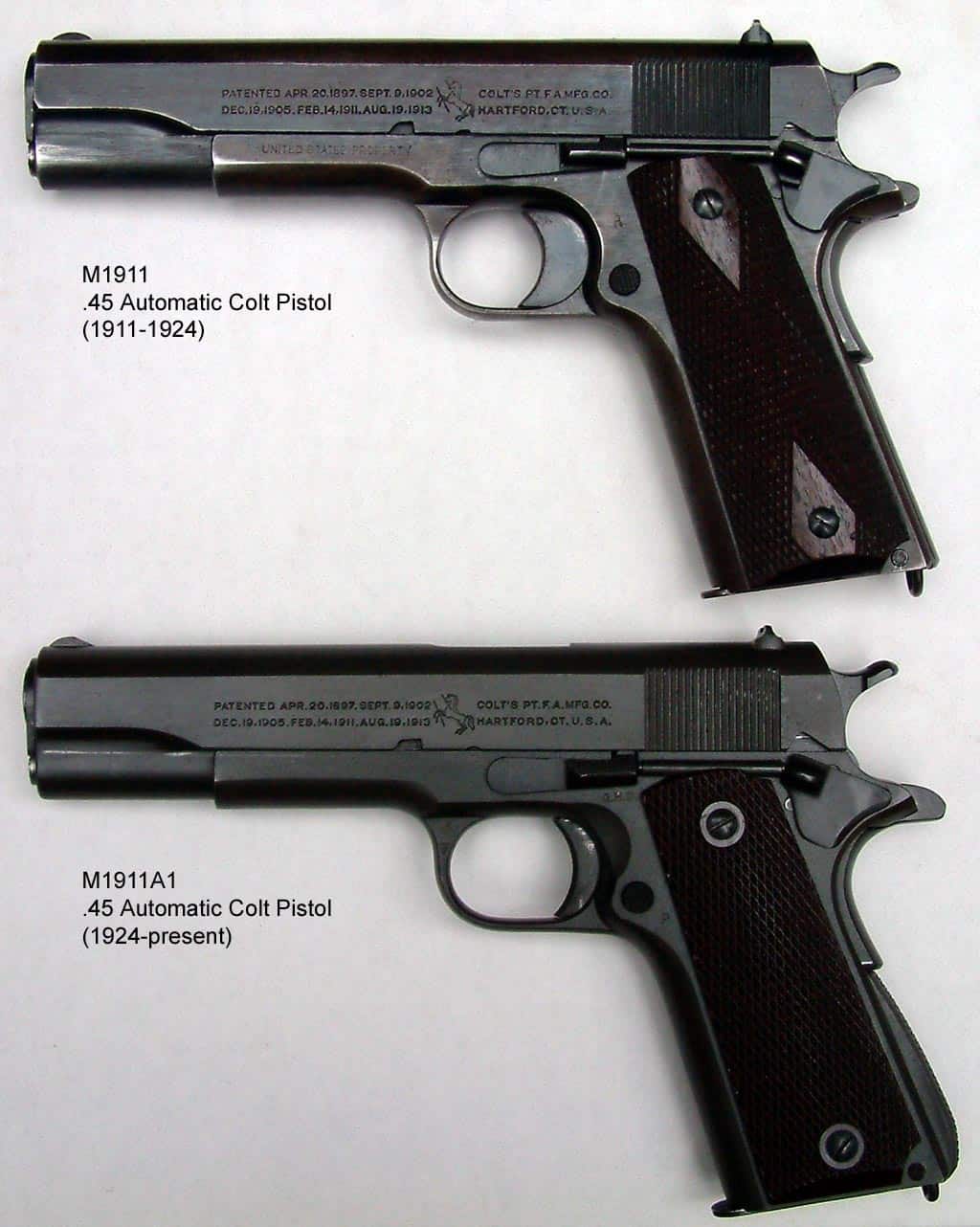
The M1911 pistol is the most famous handgun to ever be used by the United States military during the 20th century. It was invented by famed gun designer, John M. Browning and developed by the Colt Patent Firearms Manufacturing Company. Older generations may refer to the M1911 as the “.45 automatic” or simply the “.45” as it was known at the time.
Both the M1911 and the .45 ACP cartridge were developed in response to serious problems with the .38 caliber revolvers used in the Phillippines during the Spanish-American War and subsequent “pacification” campaigns in the area. The M1911 remained the standard service handgun of the U.S. Army, Navy, and Marine Corps after World War I, with a few modifications made to the trigger, hammer, grip, and frame. During its service, no real developments were made on pistols by the U.S. military.
Lewis Gun
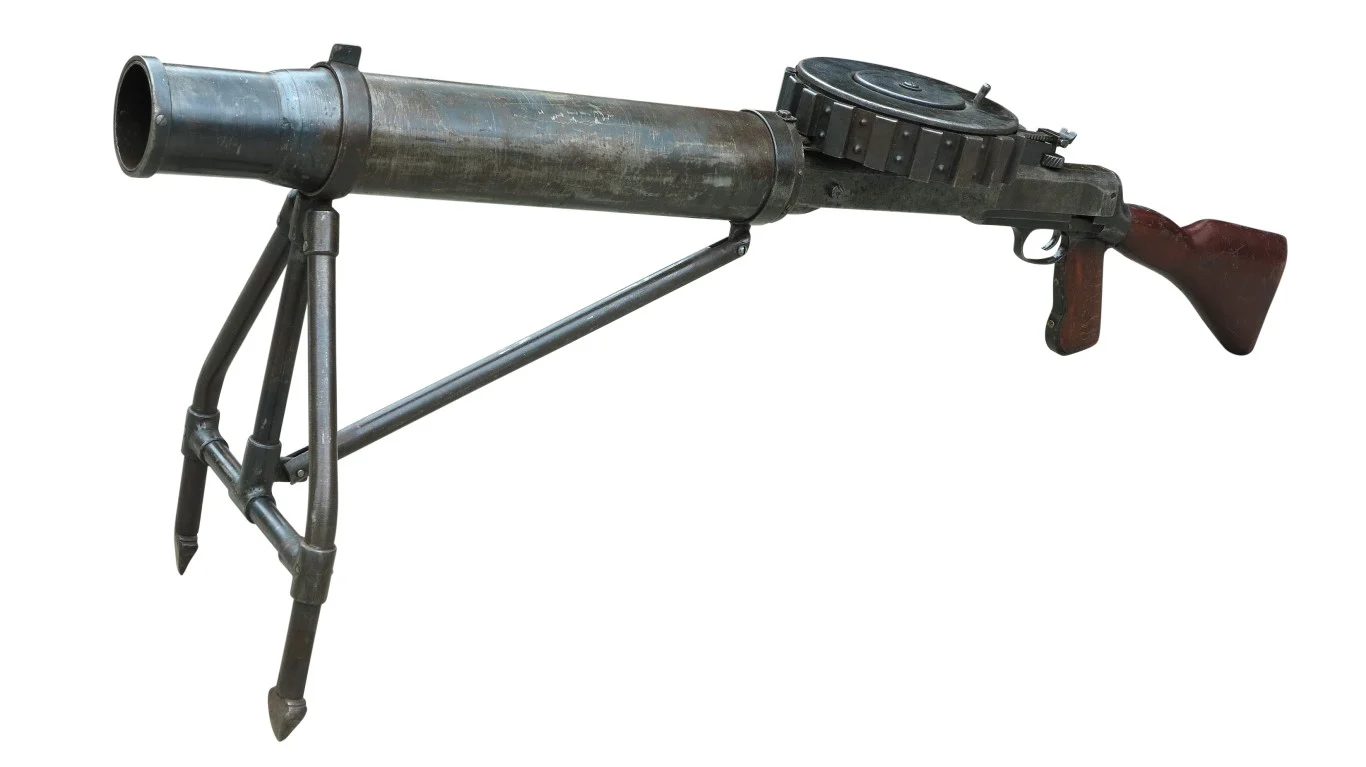
The Lewis Machine Gun is an iconic weapon no matter how you look at it. The large cylindrical jacket around the barrel and top-mounted pan magazine make it easy to identify in a lineup if you know your historical weapons. The gun’s development began in 1910 when Colonel Isaac Lewis of the U.S. Coast Artillery affiliated with the Automatic Arms Company in Buffalo, New York. They hired Colonel Lewis to oversee an improvement project on a design by Samuel N. McClean that had been rejected for an army contract.
By 1911, Lewis had developed an improved prototype and by 1912, the gun was ready to be demonstrated to army officials to secure a contract. Lewis even demonstrated the gun being fired while mounted on a biplane to showcase its versatility, which other officers found to be frivolous and irresponsible.
Vickers Machine Gun
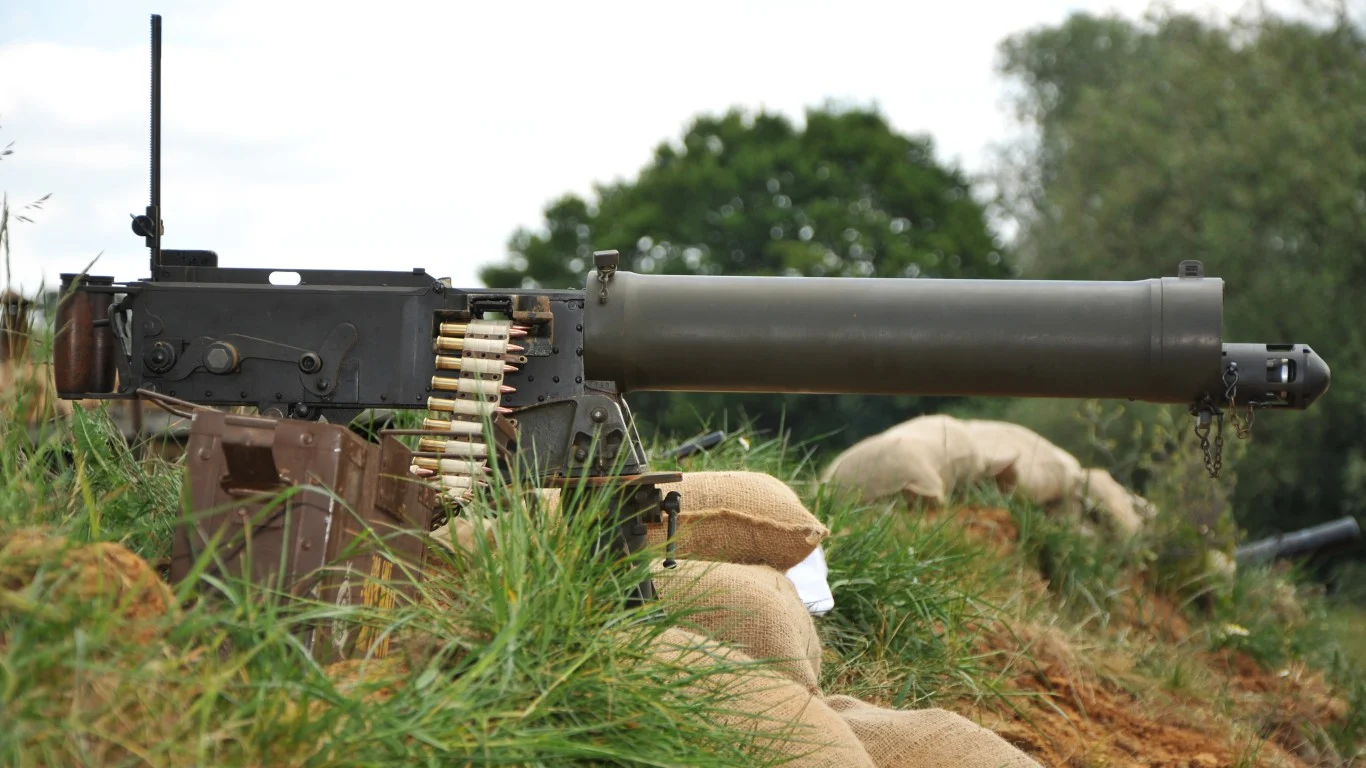
First developed in 1912, the Vickers Machine Gun was originally manufactured by Vickers Limited for the British Army. It was a water-cooled machine gun that used 0.303 British (7.7 mm) cartridges. One of the major drawbacks of the weapon was that it typically required three or more people to operate as it was large, heavy, and required massive amounts of ammunition.
A crew typically consisted of one person firing the gun, another feeding ammunition, and as many people as were necessary to transport the gun, ammunition, and any spare parts needed to maintain it on the battlefield. Despite this, it remained in service with the British Army until the 1960s as it was famed for its reliability, durability, and accuracy. It was later adapted to chamber 7.92×57mm Mauser and 0.50 BMG cartridges.
M1903 Springfield
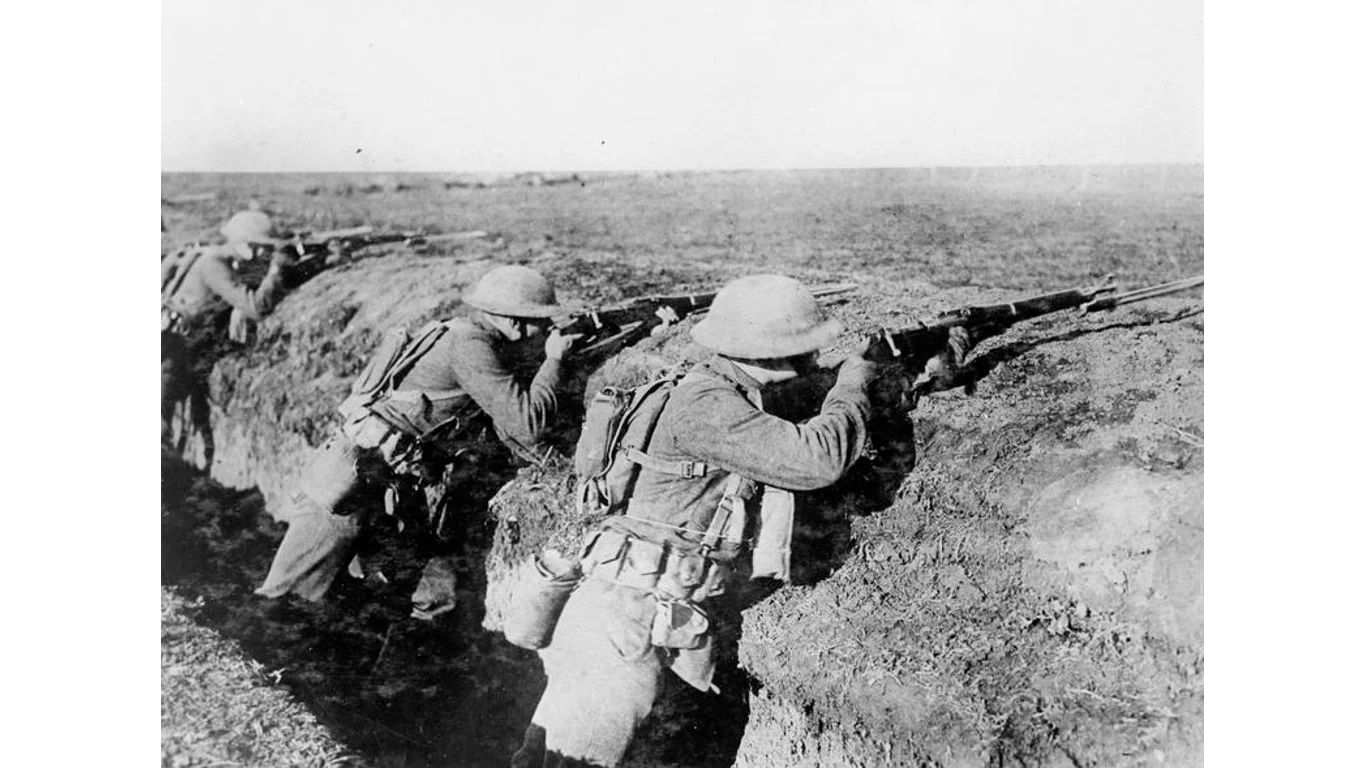
As the name suggests, the M1903 Springfield rifle was adopted by the U.S. military in 1903. It is one of the most widely-used and best-known American military rifles of all time. The gun underwent significant changes during its first three years of use. The configuration of the stock, handguard, and sights were all different when it was first implemented. However, the most significant difference was the sliding “rod bayonet” used on the original model.
President Theodore Roosevelt found the rod bayonet to be flimsy, writing “I must say that I think the ramrod bayonet is about as poor an invention as I ever saw.” Eventually, the gun was remodeled to use a traditional knife bayonet with a 16-inch blade to compensate for the reduced physical length of the M1903 compared to the Krag rifle, which was a bit longer.
Winchester 1897 Trench Gun
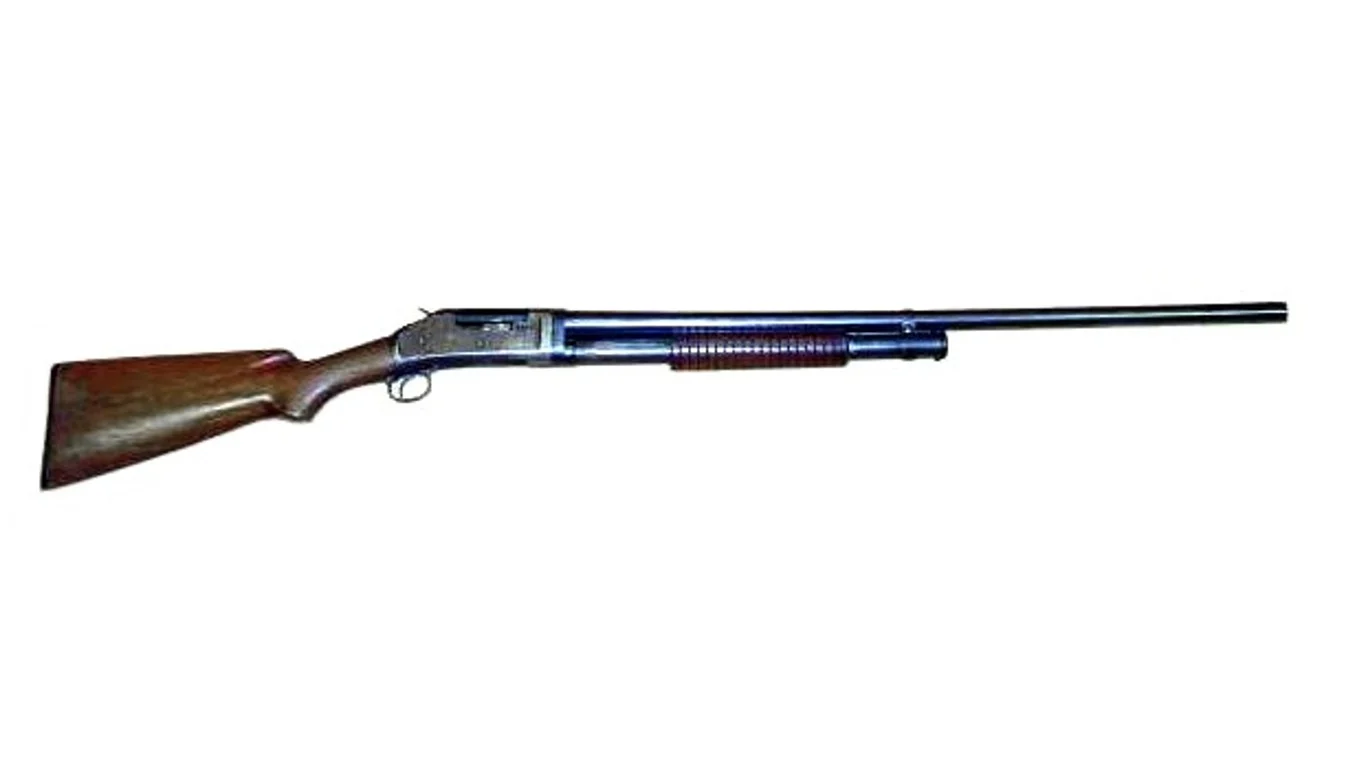
The Winchester 1897 Trench Gun was first purchased to use in the Phillippines against Filipino insurrectionists. The gun was one of many designed by John M. Browning. This gun was his second pump action shotgun, after the Winchester Model 1893. However, the Model ’93 was designed for blackpowder shells and required modifications to use the newer smokeless powder shells that were popular at the time.
When the U.S. military joined the Great War in Europe in 1917, they needed a rugged combat shotgun to match the advent of trench warfare that was common during the war and chose the Model 1897 and began making modifications to the design to optimize it for use on the Western front. The 12-gauge shotgun held five shells and the trigger lacked a disconnect, allowing the shooter to hold the trigger back and pump fire the gun until they ran out of ammunition if necessary.
Mauser Gewehr 98
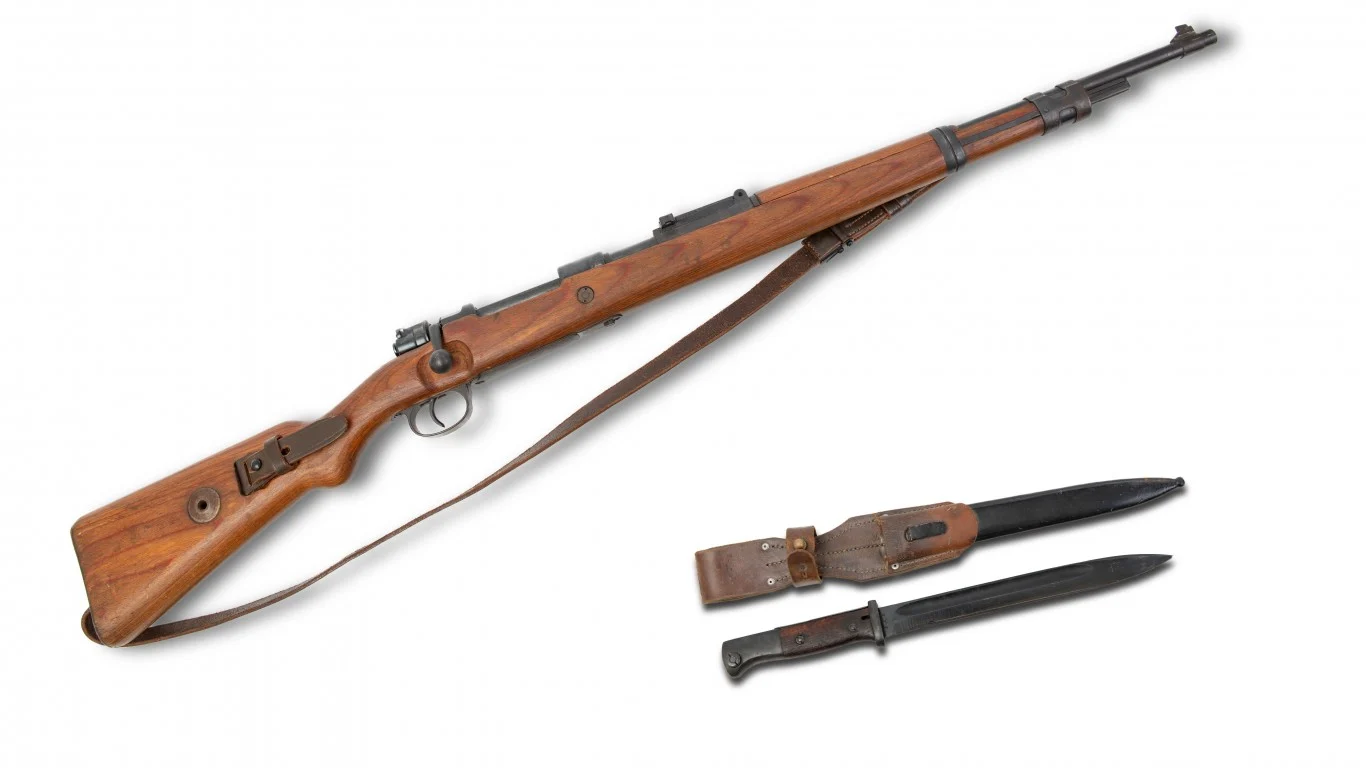
One of many German guns designed by Peter Paul von Mauser, who was initially drafted as an artilleryman and later employed as a gunsmith by the Württemberg Royal Armory. The Mauser Gewehr 98 took inspiration from Nikolaus von Dreyse’s needle gun, which was developed some 40 years prior. It retained the key turnbolt concept but improved it with a true firing pin that was self-cocked when the action was cycled.
The Gewehr 98 was the culmination of three decades of gun design, during which Mauser’s work went relatively unnoticed compared to other gun designers. It featured a wing safety and fired 11.15×60mm R blackpowder. The Gewehr 98 was originally a single-shot rifle. However, it was improved in 1971 with a tubular magazine and then again in 1884 was adapted into a repeater. It was adopted by the German Empire’s Infanterie-Gewehr 71 in 1872.
Browning Automatic Rifle

In the mid-1910s, it was clear that the U.S. military was going to be pulled into the Great War in Europe, whether it wanted to join or not. Seeing the opportunity to secure a new military gun contract, John Browning began developing a new light machine gun. He took a working example of his new automatic rifle to demonstrate its capabilities to the directors of Colt.
One year later, 3000 American military officers and assorted congressional leaders personally tested this new rifle, dubbed the Browning Automatic Rifle (BAR). Orders for the BAR were initially issued to Winchester. The first shipments of BARs to troops began in 1918. Successor variants of the gun were used from Meuse-Argonne to Vietnam. More than 500,000 BARs were produced for the military before it was decommissioned.
Luger P08 Pistol

Like the Lewis Gun, the Luger P08 pistol has a distinctive appearance that makes it identifiable. Its design is complex and fragile compared to other guns at the time. However, it retains a beautiful and sophisticated look that makes it easy to understand why so many armies worldwide adopted this pistol into their armories. The design is based on the Parabellum Pistol, the first successful semi-automatic pistol in the world. It also introduced the 9×19 Parabellum cartridge to the world stage, and this cartridge remains popular today.
The Luger P08 was adopted by the Swiss army in 1900, the German Navy in 1904, the Bolivian army in 1908, and even the U.S. army assessed this gun in its search for a large caliber pistol. In the modern day, the Lange Pistol 08, also known as the Artillery Luger, is one of the most sought-after collectors’ guns.
Browning M1917
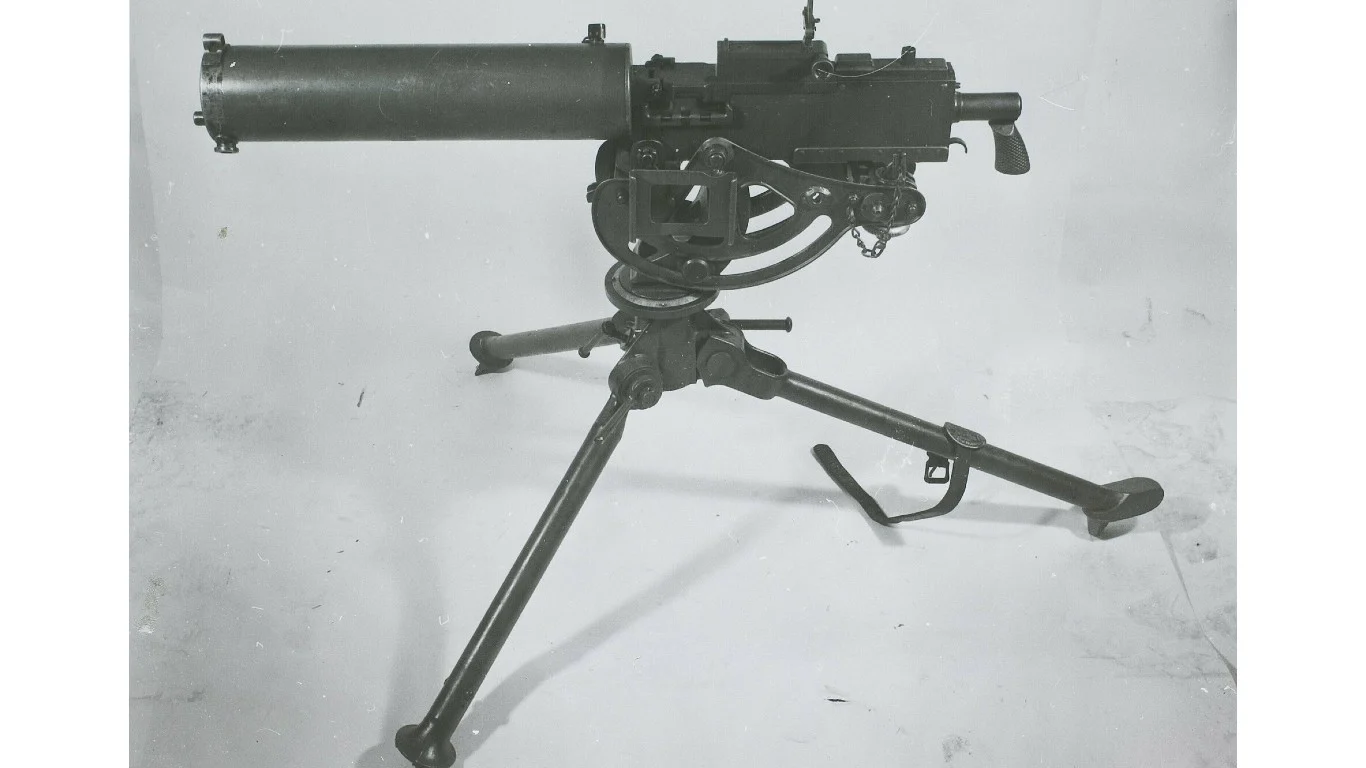
Yet another gun designed by John M. Browning, the M1917 is a successor of his first gas-operated, belt-fed machine gun that he developed in the early 1890s, the Model of 1895. As the U.S. military entered World War I, they realized very quickly that they needed more machine guns. The United States armory had very few serviceable machine guns ready to be used.
Thus, Browning began developing new machine guns and in May of 1917, he had a water-cooled prototype gun ready to be tested alongside several other machine gun prototypes, both foreign and domestically designed. Something unique about this gun is that after it was implemented by the U.S. military, one of the proctors leading the troops who were being trained to use the gun was Browning’s son, Lt. Val A. Browning, whose superior knowledge of the gun’s operation made him uniquely qualified for the position.
M1917 Enfield
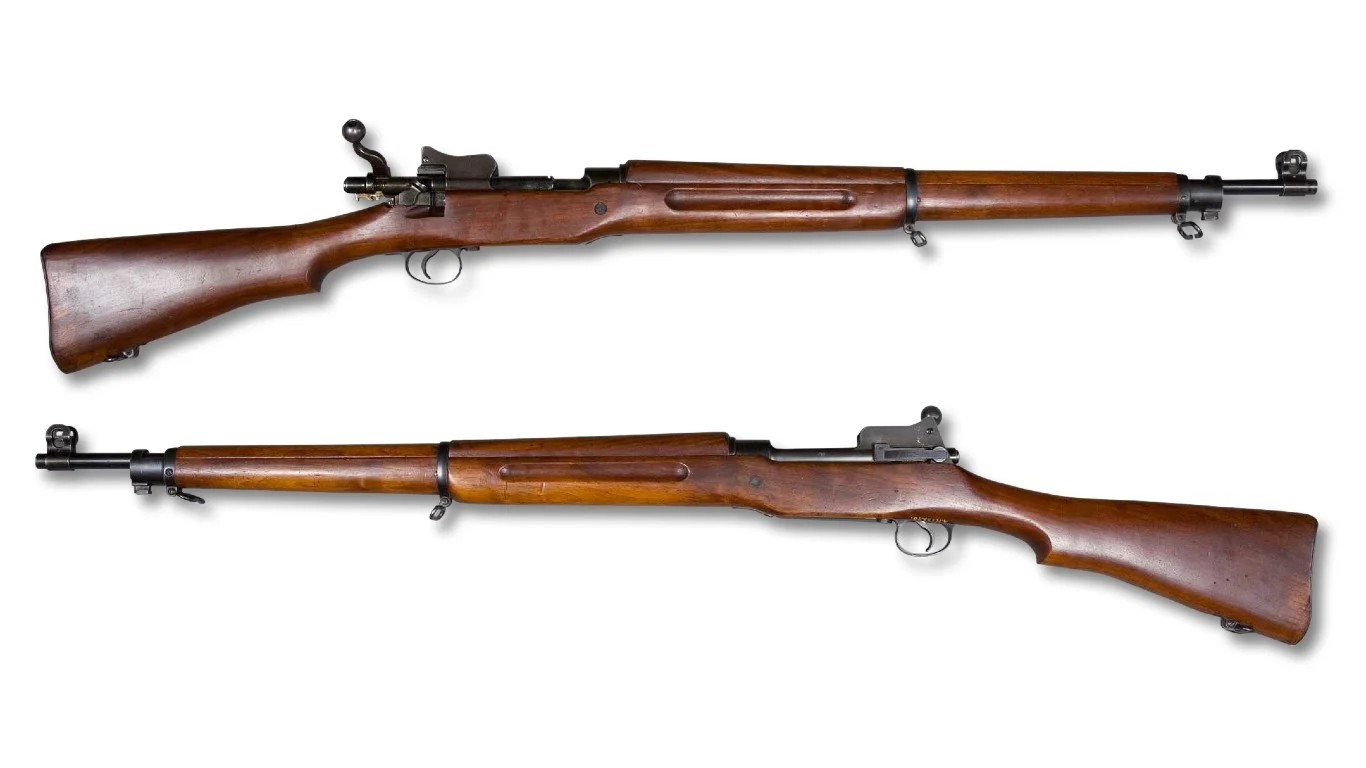
In April 1917, the U.S. military was notably short on guns. At the time, it had around 600,000 Model 1903 Springfields and around 160,000 Krag-Jorgensons, which was not nearly enough to fight a war on multiple fronts. Springfield couldn’t meet the manufacturing demand for new guns. Eddystone, Remington, and Winchester were mass-producing Pattern 14 Enfields for the British military. Since it wasn’t possible to retool American gun manufacturers to produce Springfields, they instead modified the P14 Enfield to use the U.S.-made 0.30-’06 cartridge preferred by the U.S. military.
Once the modification specifications were complete, Remington, Winchester, and Eddystone were manufacturing the U.S. version of the Enfield at twice the rate of the production of 1903 Springfields. The M1917 Enfield was a huge gun, weighing almost 8 ¼ pounds empty. It was also 46.3” long with a 26” barrel.
Bayonet
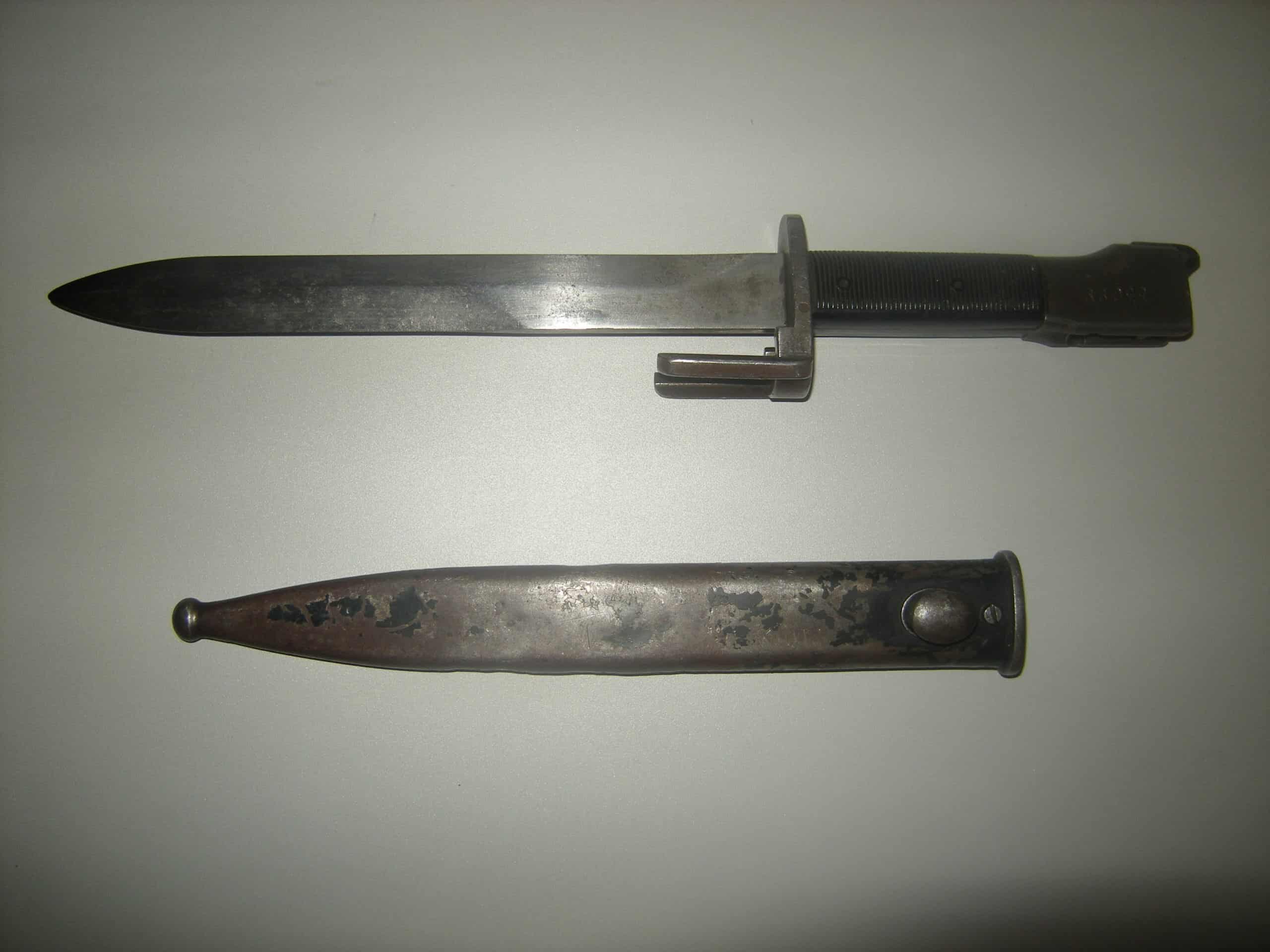
Bayonets are a weapon that’s almost as old as rifle warfare itself. The first acknowledged use of a bayonet in battle was at Ypres in 1647. The original design of a bayonet was a “plug bayonet” where the handle of the blade would be shoved into the barrel of a musket. The soldier could then use the whole unit as a pike. However, the musket couldn’t be fired with the bayonet inserted. Eventually, gunsmiths started fitting bayonets to the outside of the musket barrel, improving them greatly.
They were widely used by almost all worldwide militaries until the end of the 19th century when other types of weaponry started to outclass them. However, they experienced a resurgence in the 20th century. Bayonets were used, on some level, by the U.S. military until the 2010s when they officially phased out bayonet training in favor of additional calisthenics.
Maschinengewehr 08
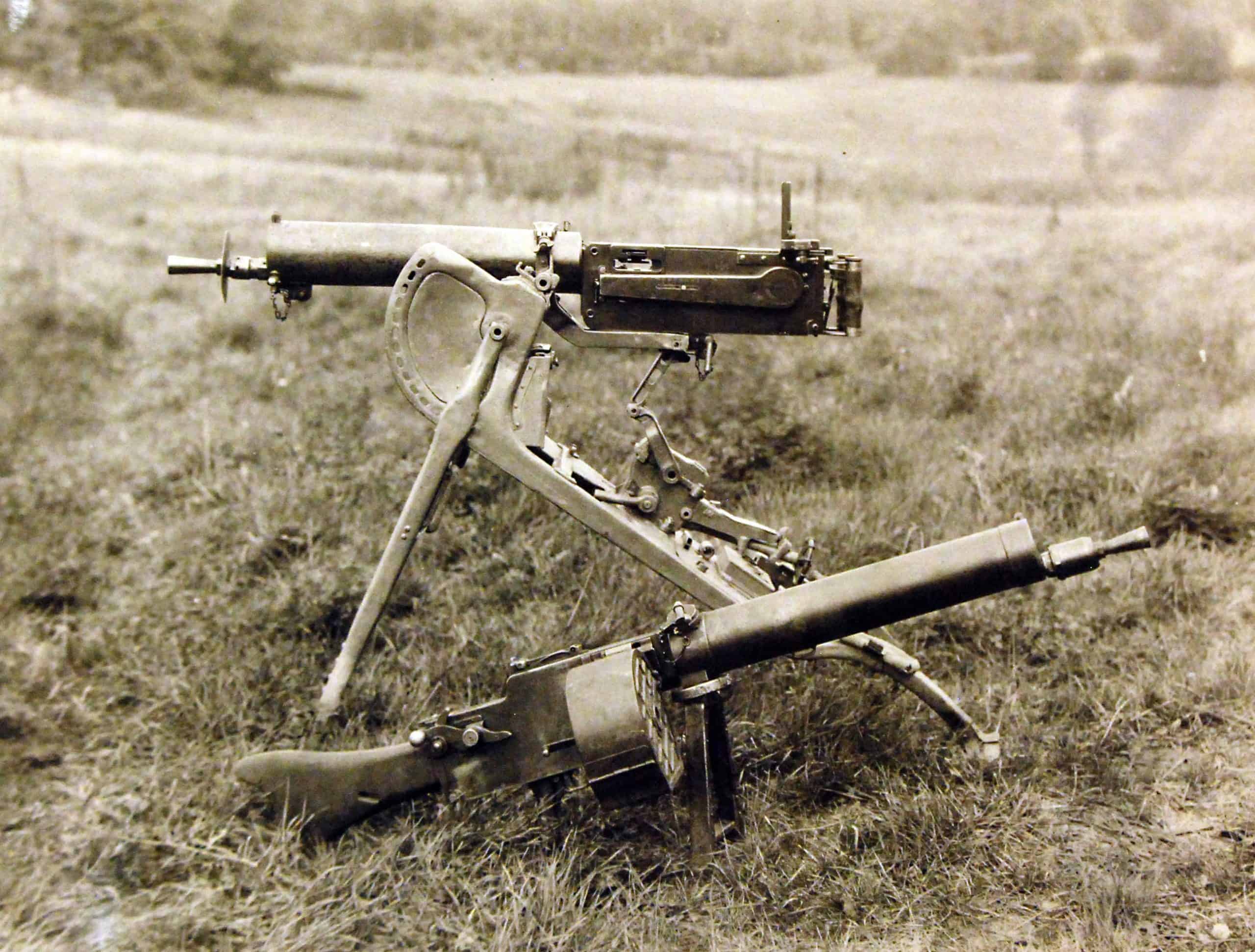
The Maxim MG08 (“Maschinengewehr 08”) was a German copy of the original machine gun developed by Sir Hiram S. Maxim in 1884. The German army made a direct copy of the gun. They used it as their standard machine gun throughout World War I. Despite being a copy, the MG08 was a brutal weapon. The presence of just one MG08 squad in a battle could influence the overall outcome.
Eventually, the MG08 was superseded by the MG34. However, the lack of stock resulted in the MG08 continuing to be a prevalent weapon for the German army during World War II as well. The German army also utilized a muzzle booster, the Rueckstossverstaeker S (“Recoil-Enhancer S”) to reconstitute some of the existent propellant gas. It would force it onto the recoil barrel for a boost.
Mosin-Nagant M91

The development of the Mosin-Nagant M91 dates back to the Russo-Ottoman War. Due to their greater training and resources, the Russians were the ultimate winners of the war. However, they were heavily burdened by their single-shot Berdan rifles, which were outranged and outclassed by the Ottomans’ repeater rifles. Trials for a new repeater rifle commenced in 1889, with three prototypes for consideration. The trials continued for years before they concluded.
They chose Captain Sergei Ivanovich Mosin’s 3-line rifle. However, the gun had a habit of double-feeding cartridges, which would cause it to fail to feed and fire. One of the other rifle designs by Léon Nagant had an interrupter. He borrowed the interrupter’s design from an earlier version of Mosin’s rifle. Nagant patented the interrupter. Then, he threatened to sue the Russian government in international court if they used it. He won and received the same contract bonus as Mosin.
Model 24 Stielhandgranate
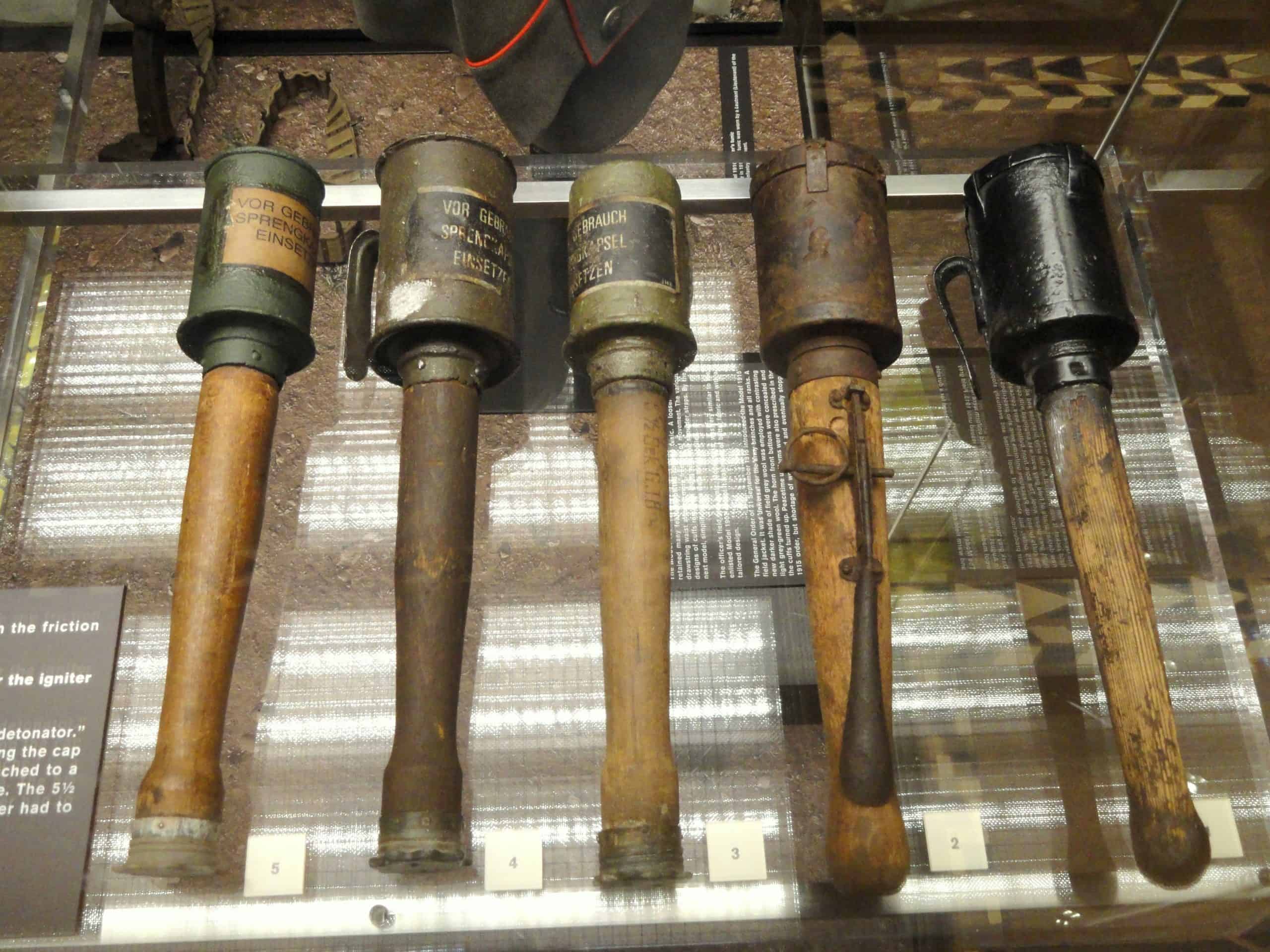
The Model 24 Stielhandgranate was the quintessential hand grenade of the German Army during World War I and World War II. Like some of the other weapons on this list, it has an extremely distinctive appearance that makes it highly identifiable to scholars. Unfortunately, that distinctive appearance also made it identifiable to enemies during the war. Unlike grenades that fit in the palm of the thrower’s hand, the Stielhandgranate has a wooden handle. The handle makes it look like a potato masher, causing it to gain that nickname.
It is often referred to as a “stick grenade” because, well, it has a stick attached. The handle gave it an impressive range among hand grenades, which are typically limited by the user’s throwing arm. The handle also prevented the grenade from rolling back towards the thrower to some extent. However, it also made it easier to identify, recover, and throw back before detonation.
MP18
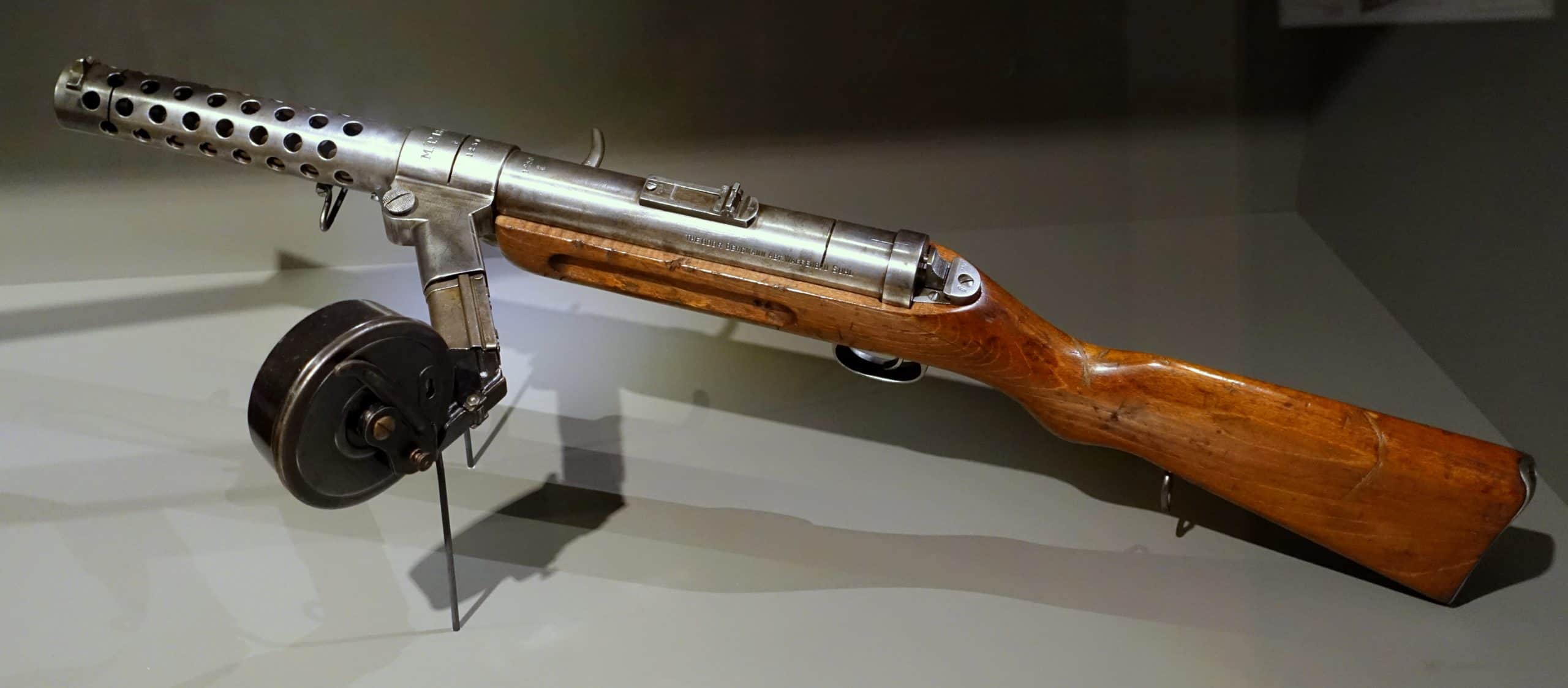
This German submachine gun was designed and manufactured by Bergmann Waffenfabrik. It was introduced into service by the German Army in 1918 during World War I. Originally, the German army commissioned the gun for the Sturmptruppen, assault groups specialized in trench combat.
It was a short-range offensive weapon that gave the soldiers using it additional firepower over pistol users in the trenches. The production lifespan of the weapon ended after World War I. The MP18 was produced in four different configurations, I, II, III, and IV. Not much is known about the MP18/II as specifications for it were limited. However, the MP18/I used the same Trommelmagazin as the Artillery Luger. Conversely, the MP18/III and IV both fed from a straight 90-degree magazine feed which took Mauser pattern box magazines like the ones used in Mauser’s experimental C06/08 pistol.
F1 Grenade
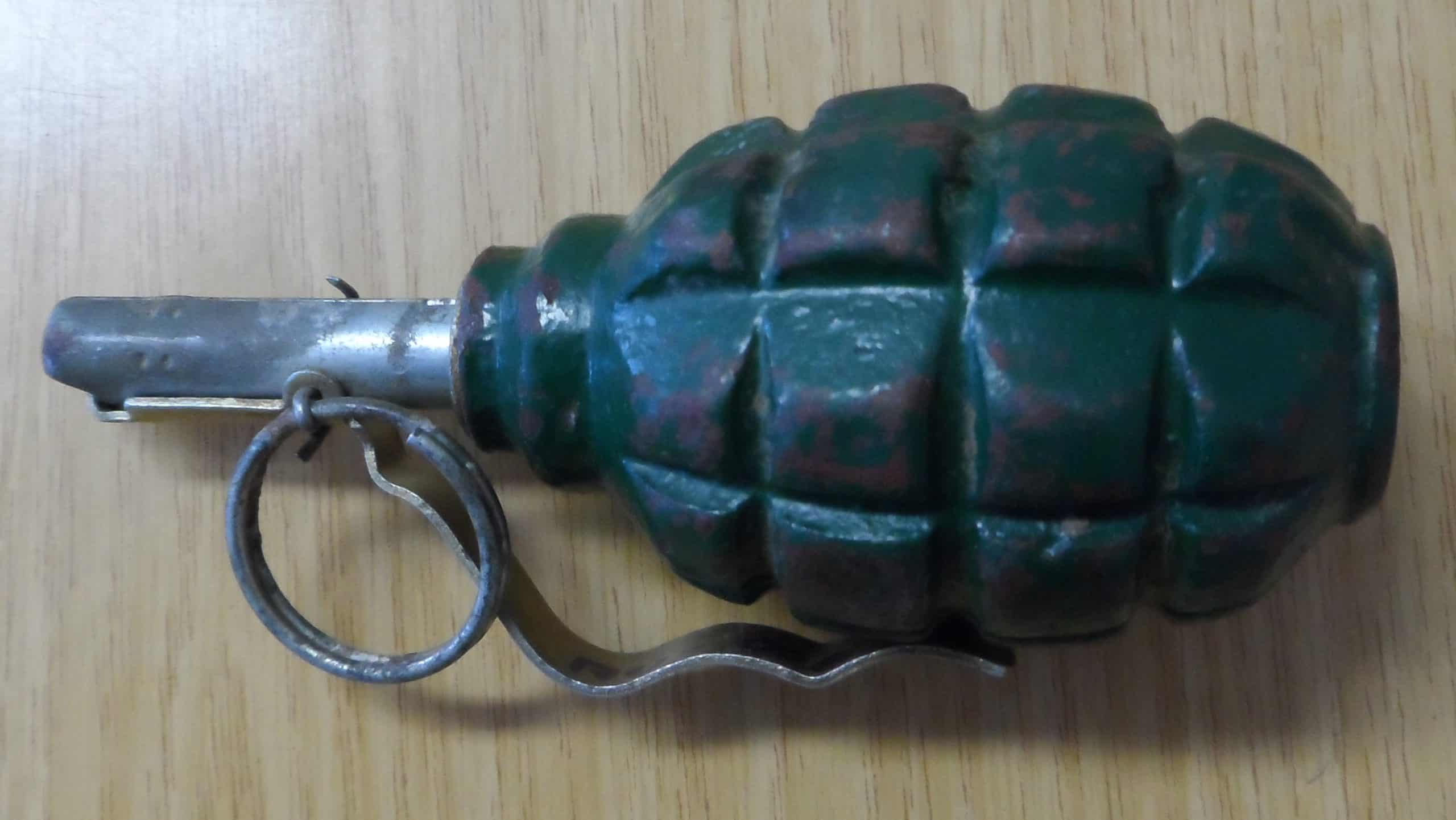
The F1 grenade was the standard anti-personnel fragmentation grenade for the French Army during WWI and WWII. The design for the F1 grenade served as the basis for other countries’ hand grenade designs, such as the American Mk 1 and the Soviet Union’s F1. After being accepted into service in 1915, the French F1 was used by the army until the fall of France to Germany in 1940.
The French F1 originally used a percussion-based detonation cap system. However, it was eventually retooled to use a more conventional timed fuse. It had a steel exterior with ribbing in the metal to ensure a solid single-handed grip for throwing. At the end of WWII in 1945, the French army discontinued the F1. They replaced it with more modern grenade designs.
Mark I Trench Knife
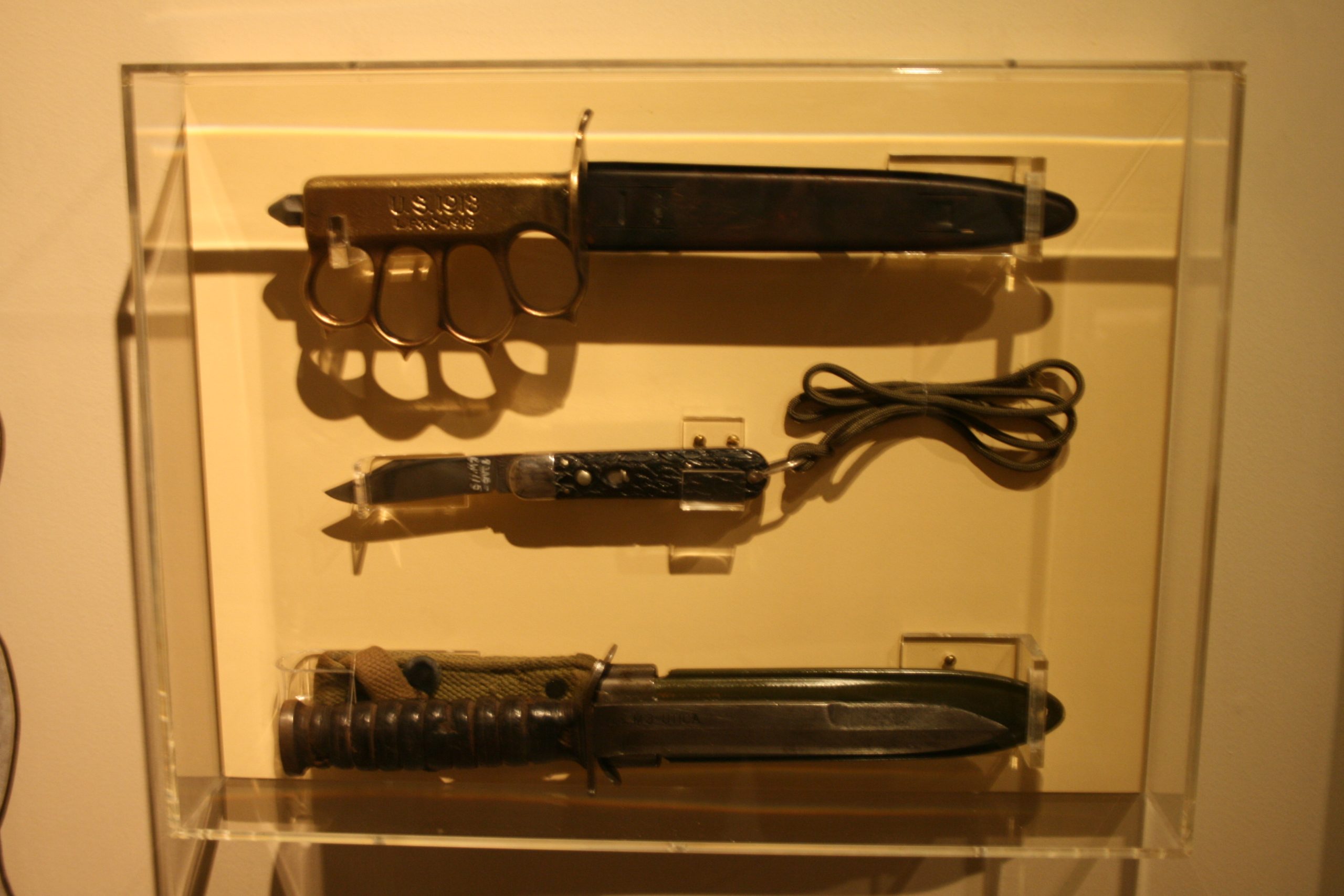
Trench warfare was nothing new at the start of World War I. However, it took a much more prominent place in military engagements than in previous wars. The U.S. military deemed previous trench knife designs inadequate for the new styles of trench warfare in World War I. So, they began developing the Mark I Trench Knife.
This 6.75-inch, double-edged blade was useful for both thrusting and slashing, unlike previous trench knives that could typically only be relied on for thrusting. The handle included spiked knuckle bows that empowered the strike when used to hit surfaces or opposing soldiers. The spikes also prevented the opposition from effectively grabbing the wielder’s knife-hand. (Cassidy, William L. The Complete Book of Knife Fighting)
Flammenwerfer M.16
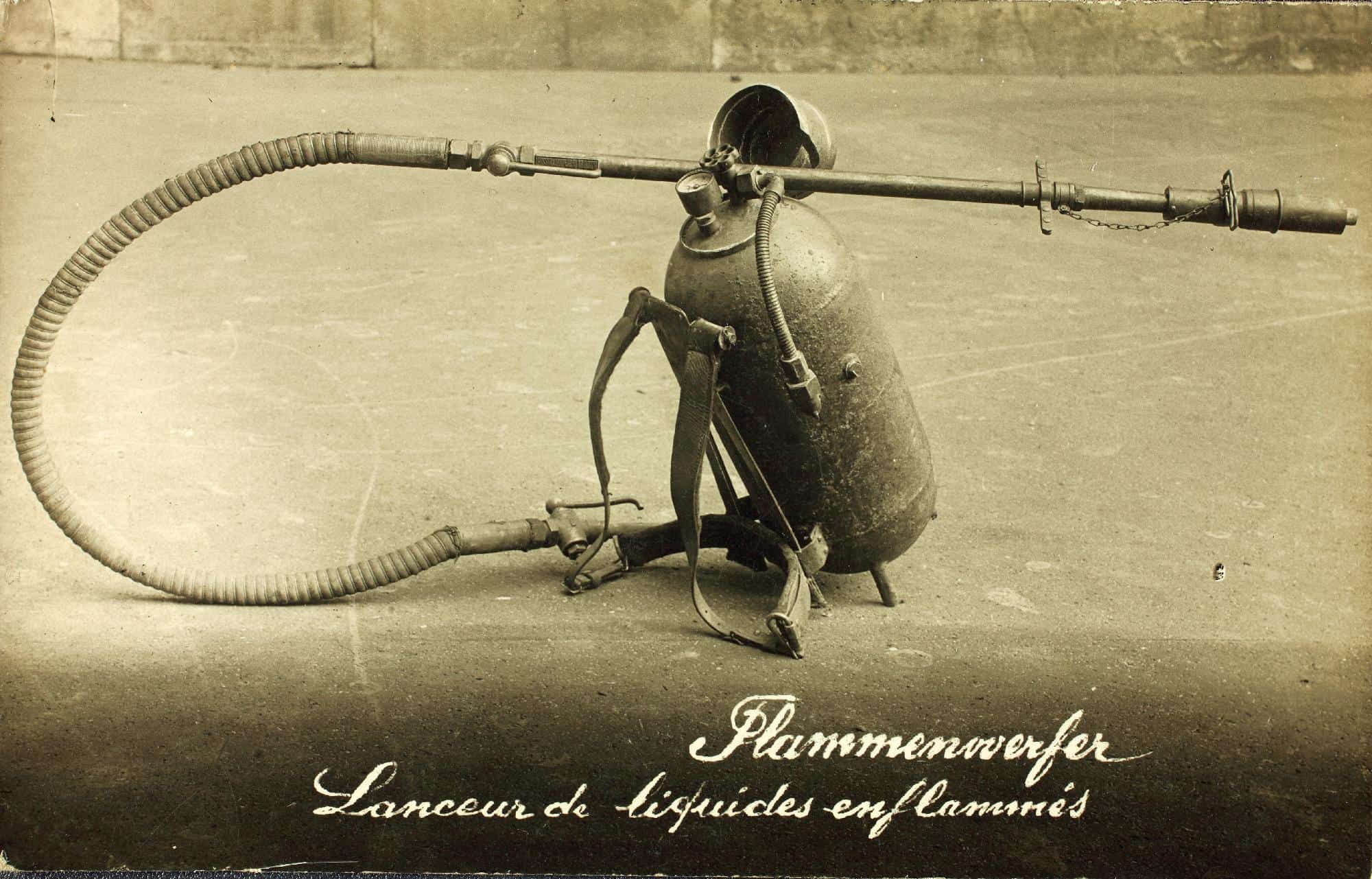
World War I was the first recorded time a country used a flamethrower during war. There are anecdotal accounts of ancient civilizations using “flamethrower-like” weapons. However, no substantiated records of what we would consider a flamethrower existed before the Flammenwerfer M.16.
It was a man-portable backpack flamethrower that required two operators to use. One operator would wear a backpack full of fuel while the other used a nozzle to aim the fuel and ignition toward the enemies. The Flammenwerfer could spray flames about 20–30 yards. The continuous spray of fire lasted for around 20–40 seconds before it overheated. The first recorded use of the Flammenwerfer was at Verdun in 1916. However, anecdotal evidence suggests that it might also have been used at the earlier Battle of Somme.
Mauser C96 Pistol
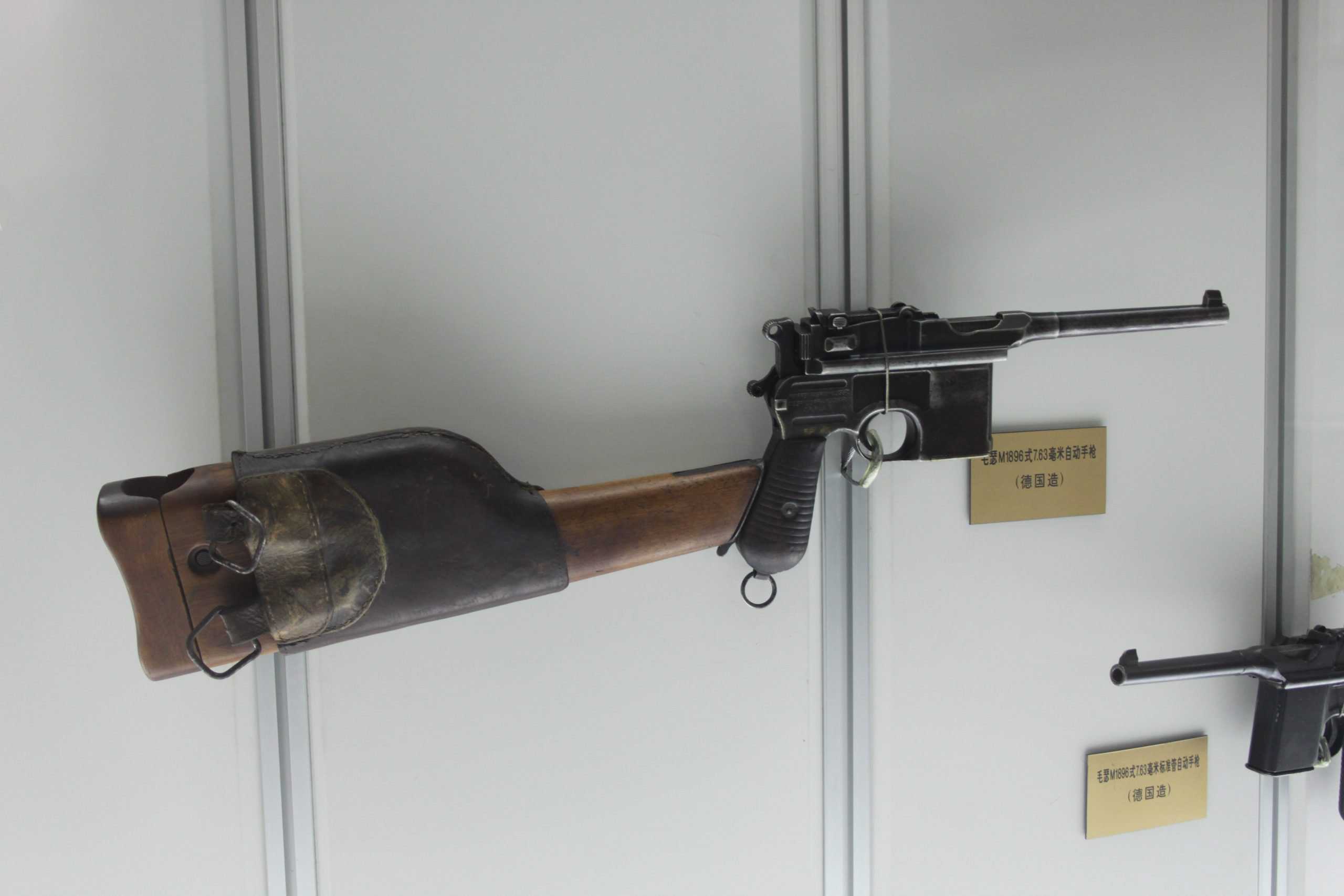
In terms of pistols, the Mauser C96 was massive, at more than a foot in length and weighing about 2 ¾ pounds loaded. Also, despite bearing the Mauser name, it wasn’t designed by the man himself. In fact, Mauser initially hated this gun so much that he attempted to forbid his engineers from working on it. However, they continued the project in secret and eventually won Mauser over.
Although it was generally a decent gun, it was never picked up for a military contract. It became famous because British officers, namely Winston Churchill, were enamored with its striking profile. They bought the commercially-produced version from Westly Richards to use as personal guns. Ultimately, this gun would become famous, in no small part due to its unique profile. Among gun collectors, it remains popular. For collectors, it has a similarly iconic profile to that of the Glock or the Colt Single-Action.